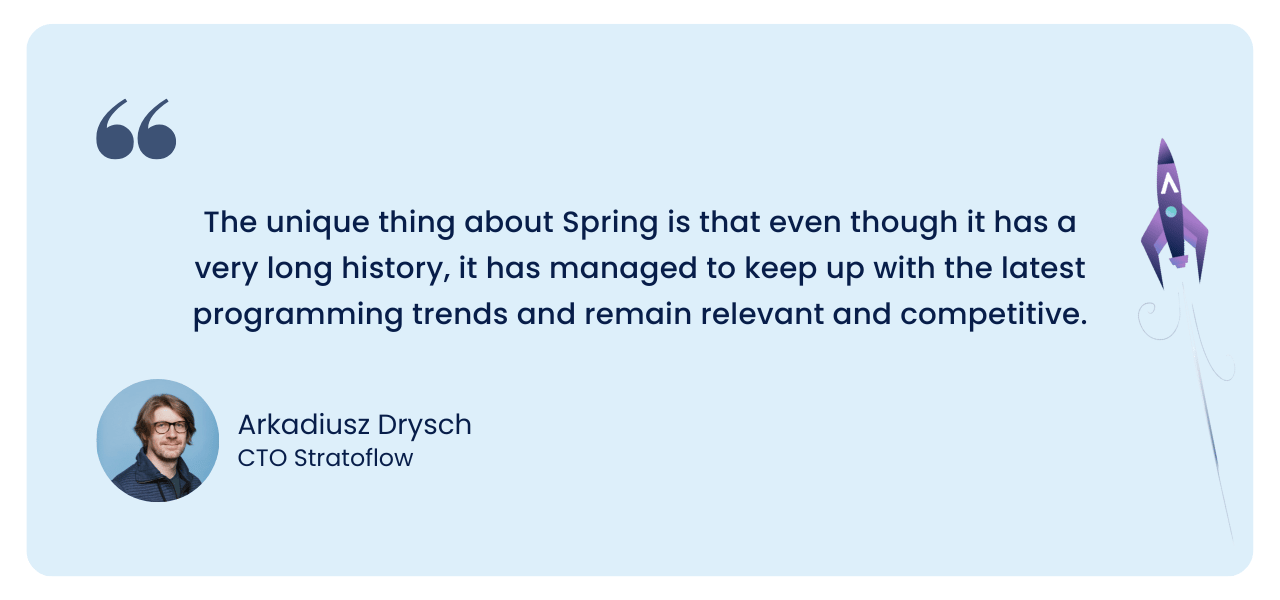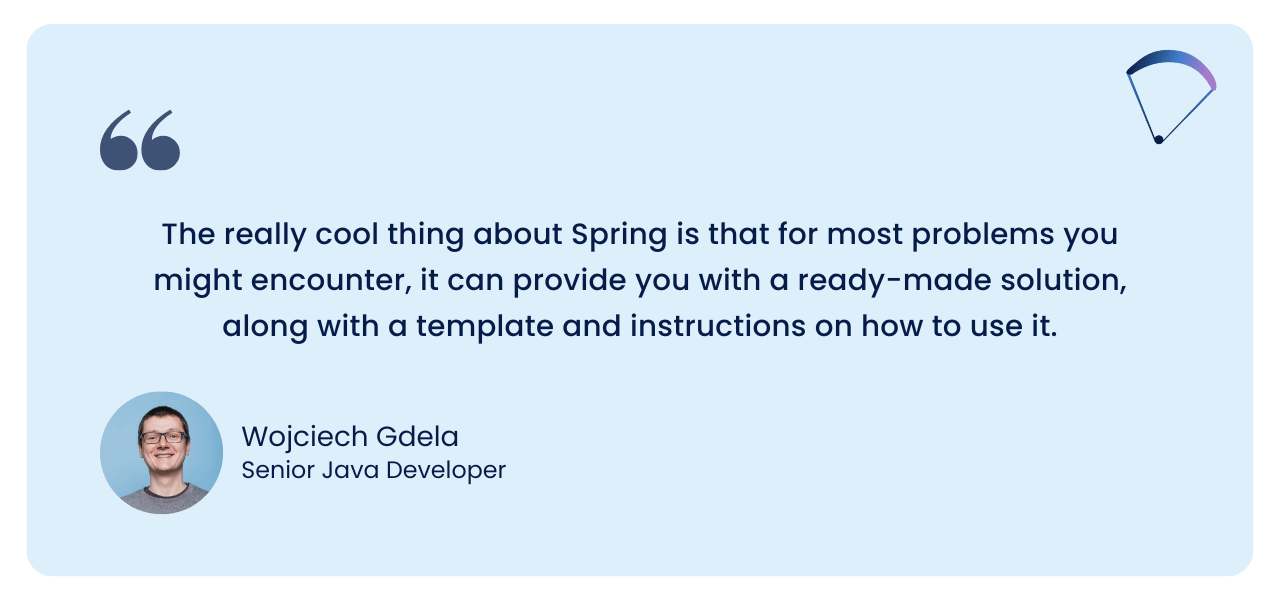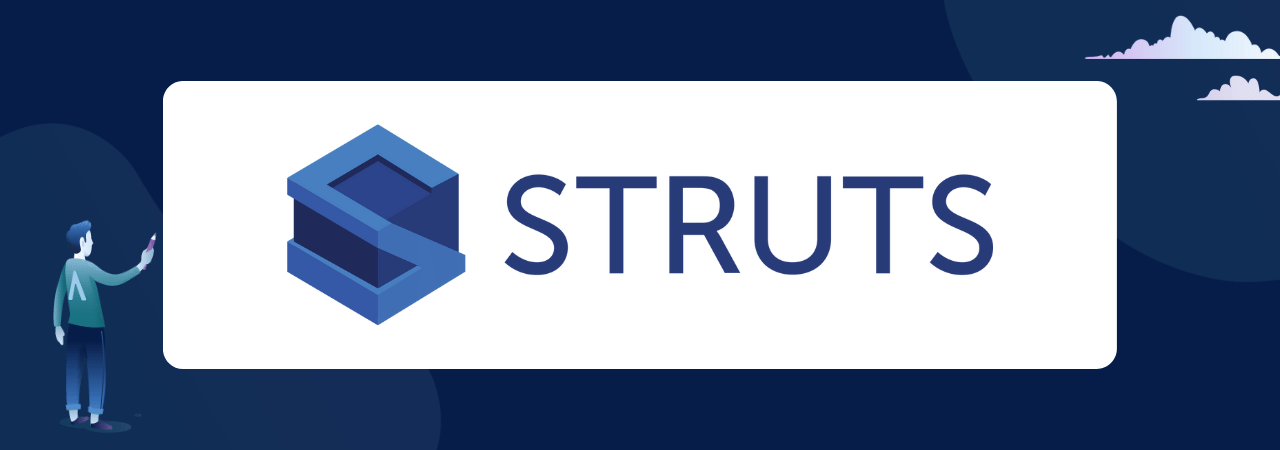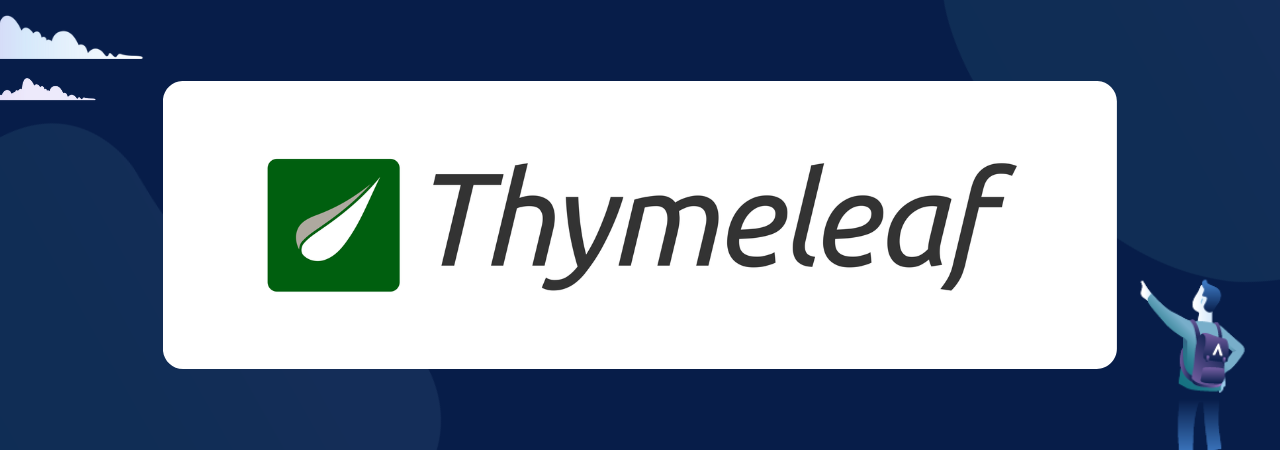
An Overview of Java Frameworks for Web Development
The world of custom software development is a dynamic and ever-expanding environment where stakeholders are constantly looking for more efficient tools and solutions to bring their ideas to life.
That’s pretty much the basic idea behind modern Java frameworks – to provide a concrete foundation for high-performance software applications, enabling developers to deliver finished digital products faster and more efficiently.
In this article, we will take a journey through the world of Java frameworks in web development. We’ll unravel the essence of Java frameworks, explore their main purposes, and compare the most popular options on the market to see which ones fit specific business scenarios.
So buckle up and get ready to discover how Java frameworks enhance the web development efforts of Java programmers.
What is a framework?
In software development, a framework is a tool that provides a basic structure and support for building robust software applications. You can think of a framework as a sturdy scaffolding that provides structure and support to the entire software development process.
Its main purpose?
To simplify and streamline the tedious task of building applications.
Frameworks come with pre-built libraries, tools, and APIs that address common programming challenges. They provide standardized approaches and conventions for tasks such as web development and database interactions. By using frameworks, programmers can save time by avoiding repetitive code and focusing on writing the core logic of their applications. Frameworks also help maintain consistency and increase productivity by providing best programming practices.
Overall, frameworks streamline the development process and make it easier to create scalable and efficient applications.

Difference between library, framework, and application programming interface
Okay, so now we know the basic definition of the Java framework. But in the whole Java programming environment, there are a number of tools like libraries and APIs that claim to more or less do similar things.
Heck, if you look at a lot of low-code platforms, they also promise pretty much the same kind of things that the frameworks are supposed to do already.
So what’s the difference?
Let’s take a quick walk through them and see what role each plays in a software development process. If you are an experienced senior programmer, you can skip this part and go straight to the Java framework comparison in the next paragraph.
Libraries
Libraries are collections of pre-written code modules or functions that developers can use to perform specific tasks. They provide ready-made functionality that can be integrated into an application. Developers can selectively use the functions or classes in a library as needed. Libraries typically focus on specific domains or functionalities, such as database access, networking, imaging, or cryptography. They offer convenience by eliminating the need to write code from scratch and can be used independently within an application.
Application Programming Interfaces (APIs)
APIs, on the other hand, define a set of rules and protocols that allow different software applications to interact with each other. They specify the methods, parameters, and data formats that applications can use to communicate and exchange information.
APIs can be provided by operating systems, programming languages, or third-party services. Developers use APIs to access functionality or services provided by other applications, libraries, or frameworks. APIs act as an intermediary layer that facilitates communication and integration between different software components.

Frameworks
Finally, frameworks are more comprehensive than libraries and provide a structured and reusable architecture for building applications. A framework dictates the overall design and flow of an application, often following a specific architectural pattern.
Frameworks also provide a coherent set of libraries, tools, and conventions that guide developers through the development process. Programmers build their applications by extending and customizing the framework’s components. Frameworks typically provide a wide range of functionality, such as handling database operations, managing user interfaces, handling request/response cycles, and enforcing security. They basically define the skeleton of an application and provide hooks for developers to plug their code into.
So if we compare the software development process to building a house, libraries would be the basic building blocks, APIs would be the pipes and wiring that connect the house to the grid, and frameworks would be the basic blueprint and concrete foundation upon which we build our house.
Low-code development platforms
In recent years, many low-code platforms have gained traction in the development community.
They promise to speed up the development process with pre-built components and easy-to-use functionality.
But wait, aren’t they basically what traditional Java frameworks have always been intended to do? What’s the difference?
Modern low-code Java platforms like Openkoda are basically frameworks taken to the next level, enabling experienced developers to do more, faster, and better.
Low-code platforms provide visual development tools that allow developers to build applications using drag-and-drop interfaces and pre-built components. This visual approach eliminates the need for manual coding of many mundane and repetitive parts of software applications. In contrast, traditional Java frameworks typically require developers to write all the code manually.
They provide a range of built-in capabilities, such as form builders, data integration, and automated UI generation, that significantly reduce development time. Low-code platforms also handle much of the underlying infrastructure and boilerplate code, allowing developers to focus on business logic rather than technical implementation.
Most popular Java frameworks
In the vast Java ecosystem, there are many different frameworks, from highly specialized ones designed to solve complex problems to powerhouses that aim to improve programmer efficiency at every step of the software development lifecycle.
By understanding the nuances of each framework, you can make an informed decision and choose the one that best fits your development goals. So, let’s compare the most popular Java frameworks and find out which one suits your needs!
[Read also: How to choose a software development company]

1.Spring
The Spring Framework is a popular lightweight Java framework that provides extensive support for building enterprise-class applications. In fact, Spring is the framework of choice for Stratoflow developers when developing high-performance software applications for external customers.
It offers a wide range of features and modules that simplify various aspects of application development. Among other Java frameworks, Spring is known for its versatility, scalability, and flexibility. This framework encourages a modular and scalable approach, allowing developers to focus on writing maintainable and clean code. Spring’s versatility and extensive ecosystem make it the first choice for building robust, enterprise-class applications that stand the test of time.

Pros and features
- Dependency Injection and Inversion of Control (IoC) – Spring provides a powerful dependency injection mechanism that encourages loose coupling between components. This allows for easier testing, modularity, and flexibility in application development. The IoC container manages object creation and lifecycle, reducing the burden on developers.
- AOP and Declarative Programming – Spring also supports Aspect-Oriented Programming (AOP), allowing developers to modularize cross-cutting concerns such as logging, security, and transaction management. AOP enables cleaner and more modular code by separating these concerns from the core business logic. Spring enables the use of declarative programming to specify behaviors and configurations, reducing boilerplate code.
- Lightweight and non-intrusivness – Spring is known for its lightweight and non-intrusive approach. It allows developers to use only the parts of the framework they need, reducing overhead and unnecessary dependencies.
- Modularity and Scalability – Spring’s modular architecture allows developers to build applications in a highly scalable and modular way. Applications can be broken down into smaller, more manageable components, encouraging code reuse and easy maintenance.
- Compatibility with other services – Spring is so well-known and popular that many technologies support it out of the box. For example, Hazelcast IMDG (in-memory data grid or distributed cache) and Hazelcast JET have Spring support without the need for extensive configuration. Programmers writing IMDG/JET code can easily use Spring components because Hazelcast provides a way to use them in IMDG/JET.
- Enterprise-grade features – Spring offers a wide range of enterprise-grade features, such as transaction management, security, caching, scheduling, and batch processing. These features simplify the development of robust and secure enterprise applications.
- Great support – Even after so many years on the market, Spring continues to be updated with new features and functionalities, making it a competitive choice for modern software development projects.
Cons
- Configuration complexity – Spring offers multiple approaches for configuration, including XML, Java annotations, and Java-based configuration classes. While this flexibility is beneficial, it can also lead to increased complexity, especially in large-scale applications.
- Steep learning curve – Spring is a comprehensive framework that encompasses a wide range of features and modules. Due to its extensive capabilities, mastering all aspects of the framework can require a significant learning curve, especially for beginners or developers new to Java enterprise development. It is worth noting, though, that in real-life enterprise projects, only a few developers need to know Spring from the inside out. After the initial configuration, the rest of the programmers in a project rarely need to worry about how things work and how to perform specific actions in the Spring framework.
- Runtime performance overhead – The additional layers of abstraction and indirection introduced by the Spring Framework might impose a slight runtime performance overhead compared to traditional Java web development. But, we have to put the emphasis on the word “might”. In most circumstances, Spring’s performance impact is generally negligible but if application performance is an uppermost priority developers have to work cautiously and conduct proper benchmarking when building high-performance or resource-constrained systems.
Popular uses
- Many big organizations like Netflix, Amazon and eBay are using Spring boot while Yatra uses Spring MVC.
- Spring framework is a perfect choice for large, scalable enterprise-grade applications.
- Thanks to its solid reputation and long history, it’s a great framework for projects that are planned to continue for many years in the future.
What our devs had to say
As we’ve mentioned before, Spring is our go-to framework for developing custom software solutions for our customers. And there’s a reason for that.
Our developers praise the Spring framework for its great modularity and the wide range of out-of-the-box tools and solutions available. But there’s one thing that really sets Spring apart from other available Java frameworks – its admirable longevity.
Over the years, there have been many very promising and groundbreaking frameworks that, for whatever reason, just didn’t catch on with the general developer community, and after a few years, no one chose them for future software development projects.
Spring is a very different story. Even after 20 years on the market, it is still a great choice for modern high-performance software projects, thanks to an ever-growing library of tools and integrations.
Arek Drysh, CTO of Stratoflow, had this to say about the Spring Framework and why it is the backbone of so many of the company’s software projects:
“The unique thing about Spring is that even though it has a very long history, it has managed to keep up with the latest programming trends and remain relevant and competitive”.

In Stratoflow projects we use Spring as our basic framework, or rather a family of frameworks to help us write applications faster and more efficiently. A family because there are a lot of things that fall under the Spring banner that you can use in your project.
That’s really the biggest advantage of Spring – you don’t have to play around with fitting different frameworks together, or choosing which framework is best for which task. In a way, Spring is like the Swiss army knife of Java software development.
In Stratoflow projects, we use it mainly for dependency injection, building web-based controllers, creating REST APIs, scheduling the execution of cyclic and scheduled shuffles in the system, and securing applications with a system of users, roles, and permissions.
Wojtek, one of your senior Java engineers, said this about why Spring has been such a solid programming framework over the years:
“The really cool thing about Spring is that for most problems you might encounter, it can provide you with a ready-made solution, along with a template and instructions on how to use it”.

In summary, the Spring Framework offers a powerful set of features and benefits that improve the productivity, maintainability, and scalability of Java application development. Its flexible architecture, extensive integration support, and active community make it a top choice for building enterprise-class applications even after 20 years on the market.
2. Hibernate
Hibernate, along with Spring, is in the Top 3 most popular Java frameworks. It simplifies the process of interacting with relational databases in a Java application (RDBMSs).
When developing in a language such as Java that follows an object-oriented approach, you may encounter a challenge known as object-relational impedance mismatch or paradigm mismatch. Hibernate provides a solution to these mismatch problems in Java.
By using the Hibernate framework, Java developers can effectively overcome the differences between object-oriented programming and relational databases, enabling smoother integration and data management within their Java applications.

Pros and features
- Object-relational mapping (ORM) – Hibernate provides a powerful ORM solution, allowing developers to map Java objects to relational database tables. This abstraction simplifies database interactions and eliminates the need for writing complex SQL queries manually. It bridges the gap between object-oriented programming and relational databases, making it easier to work with data in a more intuitive and efficient manner.
- Database independence – Hibernate abstracts the underlying database details, providing a database-independent programming interface. It supports multiple databases, such as Oracle, MySQL, PostgreSQL, and more. This database independence allows developers to switch between different database systems seamlessly without requiring extensive changes to the application code.
- Automatic CRUD operations – It also simplifies the process of performing CRUD operations on database entities. It automatically generates the necessary SQL statements based on the defined object mappings and executes them transparently. This saves developers from writing repetitive boilerplate code for common database operations, reducing development time and effort.
- Caching and performance optimization – Hibernate offers built-in caching mechanisms that can significantly improve application performance. It allows for transparent caching of frequently accessed data, reducing the need for repeated database queries. Hibernate supports various levels of caching, including first-level (session) cache and second-level (application) cache, enhancing the overall responsiveness and scalability of the application.
- Transaction management – It greatly simplifies transaction management in Java applications. It provides built-in support for managing database transactions, ensuring data integrity and consistency. Hibernate’s transaction management capabilities allow developers to define and control transaction boundaries, making it easier to handle complex data operations and maintain data integrity in multistep processes.
Cons
- Performance overhead – While Hibernate provides powerful ORM capabilities, it introduces an additional layer of abstraction between the application and the database. This abstraction can sometimes result in a performance overhead compared to hand-tailored SQL queries or lighter-weight frameworks. The automatic SQL generation and object-relational mapping add a level of indirection, which may impact the execution speed and resource consumption, especially in high-performance or resource-constrained environments.
- Configuration and debugging – Hibernate’s extensive configuration options and flexibility can lead to complex configuration setups, especially in large-scale applications. Configuring Hibernate mappings, session factories, and caching mechanisms correctly requires careful attention and understanding of the framework. Troubleshooting and debugging Hibernate-related issues can also be challenging, as it involves digging into the generated SQL queries, analyzing the mapping configurations, and interpreting the error messages from the framework. A deep understanding of Hibernate’s internals is often necessary to resolve complex issues effectively.
- Learning curve and complexity – Hibernate is a comprehensive framework with a steep learning curve. It encompasses various concepts, annotations, and configuration options, which can be overwhelming for developers new to the framework. Mastering Hibernate requires a significant investment in learning and understanding its features, mappings, and best practices. The complexity of Hibernate can sometimes lead to misconfigurations or performance issues if not used correctly.
Popular uses
- Many large organizations like Oracle, IBM, DELL, and Accenture use Hibernate framework in their development projects.
- Thank’s to it’s object-relational mapping (ORM) Hibernate is a great framework for large, database-driven applications.
3. Apache Struts
The Apache Struts framework is yet another widely used open-source framework for building web applications in Java, created and maintained by the Apache Software Foundation (ASF).
It follows the Model-View-Controller (MVC) architectural pattern, providing developers with a structured and modular approach to application development.

Pros and features
- MVC architecture – Struts follows the Model-View-Controller (MVC) architectural pattern, which promotes a clear separation of concerns between different components of the application. This separation enhances code reusability, maintainability, and testability. Developers can easily update or modify specific parts of the application without affecting the entire system, leading to a more flexible and scalable codebase.
- Ready-to-use components – Apache’s framework provides a comprehensive set of pre-built components that streamline web application development. These components include form handling, input validation, data binding, and navigation management. Developers can leverage these components to accelerate development and reduce boilerplate code, allowing them to focus more on business logic rather than low-level infrastructure.
- Built-in request handling – Struts simplifies the handling of HTTP requests by providing a central controller component. This component, known as the ActionServlet, receives incoming requests and routes them to the appropriate controller class based on predefined mappings. This approach eliminates the need for developers to write custom request-handling code, making request processing more efficient and consistent across the application.
- Centralized configuration – rather than coding information into Java programs, many Struts values are represented in XML or property files.
Cons
- Steep learning curve – Struts has a relatively steep learning curve, especially for developers who are new to the framework. It requires a solid understanding of the MVC architecture patterns and the various components and configuration files involved. Additionally, developers may need to learn specific Struts conventions and APIs, which can initially be overwhelming.
- Configuration overhead – Struts relies heavily on XML configuration files for defining mappings, validation rules, and other application-specific configurations. Managing and maintaining these configuration files can become complex, especially in large-scale projects with numerous actions and views. The configuration overhead can lead to increased development time and effort, as well as potential errors or inconsistencies in the configuration files.
- Limited flexibility – While Struts provides a robust set of features and components, it may not be suitable for all types of web application development scenarios. The framework has specific conventions and design patterns that need to be followed, which can limit the flexibility of customization. In situations where an application requires unconventional workflows or complex UI interactions, developers may find it challenging to achieve the desired flexibility or implement certain advanced features.
Popular uses
- The Apache Struts framework is well-suited for various business scenarios where developing web applications based on the Model-View-Controller (MVC) architectural pattern is particullary advantageous.
- Struts is often used as a foundation for building content management systems (CMS). Its architecture lends itself well to managing content, handling user authentication and authorization, and providing extensibility for customizations.
4. Thymeleaf
Thymeleaf is an innovative Java template engine designed for server-side applications, whether in web or standalone environments that is gaining popularity among Java developers. Its primary objective is to enhance the development workflow by providing elegant and visually appealing HTML templates that function seamlessly across browsers and serve as static prototypes. By enabling better collaboration within development teams, Thymeleaf fosters stronger cooperation and efficient project development.

Pros and features
- Natural Templating – Thymeleaf allows developers to create templates that closely resemble natural HTML syntax. This makes it easy to read and understand the code, promoting maintainability and collaboration within development teams.
- Server-side Rendering – Thymeleaf operates on the server side, generating dynamic HTML content that is sent to the client. This approach provides flexibility and allows for data processing and manipulation before rendering the final output.
- Full HTML5 Support – This Java framework fully supports HTML5 features, allowing developers to leverage the latest HTML standards in their templates. This includes support for HTML5 form validation, input types, and other modern elements.
- Seamless Integration with Spring – Thymeleaf has excellent integration capabilities with the Spring Framework. It can be easily integrated into Spring-based projects, enabling powerful features such as data binding, form handling, and easy access to Spring components.
Cons
- Limited Front-End Capabilities – Thymeleaf focuses primarily on server-side rendering, which means it has limited capabilities for front-end interactivity and dynamic updates. While it supports basic JavaScript and AJAX integration, more advanced front-end functionalities may require additional tools or libraries.
- Performance Overhead – Thymeleaf’s server-side rendering approach introduces a performance overhead compared to client-side rendering frameworks. The server needs to process the templates and generate the HTML content for each request, which may impact response times, especially in high-traffic scenarios. However, Thymeleaf offers various caching options to mitigate this issue and improve performance.
Popular uses
- Thymeleaf framework is used by many popular digital organizations such as Apereo CAS, Auchan or Broadleaf ecommerce
5. Grails
Grails is a powerful and innovative Java framework that combines the best features of the Groovy programming language and the Spring framework.
Groovy is a programming language designed to increase developer productivity on the Java platform. It is an object-oriented language that shares compatibility with Java’s syntax, and it compiles to bytecode that can be executed on the Java Virtual Machine (JVM).
Thanks to Grails’ seamless integration with popular libraries, convention-based approach, and emphasis on productivity it is an attractive choice for building robust and scalable web applications in Java.

Pros and features
- Groovy language integration – Grails is built on the Groovy programming language, which provides a dynamic and expressive syntax. Groovy seamlessly integrates with Java, allowing developers to leverage existing Java libraries and frameworks within Grails applications. This interoperability simplifies the development process and provides access to a vast ecosystem of Java tools and resources.
- Convention-over-configuration – Grails follows a convention-over-configuration approach, reducing the need for extensive configuration files and boilerplate code. By adopting sensible defaults and naming conventions, Grails automatically handles common tasks such as database migrations, URL mapping, and dependency injection. This approach minimizes configuration overhead and allows developers to focus on writing application-specific code rather than spending time on repetitive configurations.
- Full-stack framework – Grails is a full-stack framework that integrates multiple technologies and frameworks seamlessly. It includes powerful features like integrated ORM (Object-Relational Mapping) with GORM, support for RESTful web services, security features with Spring Security integration, and comprehensive testing capabilities. Grails simplifies the integration of these technologies, making it easier for developers to build feature-rich and scalable applications.
Cons
- Learning curve – Grails has a relatively steep learning curve, especially for developers who are new to Groovy or the convention-over-configuration approach. The framework introduces its own concepts, conventions, and abstractions, which require time and effort to fully grasp.
- Limited community and ecosystem – Compared to other popular Java frameworks like Spring or Hibernate, the community, and ecosystem surrounding Grails are relatively smaller. This means that there may be fewer readily available resources, plugins, and community-contributed libraries specifically tailored for Grails.
Popular uses
- Many modern e-commerce businesses leverage the Grails framework
6. Google Web Toolkit (GWT)
Google Web Toolkit (GWT) is quite an interesting Java framework that allows developers to write front-end code in Java and automatically compile it into efficient, cross-browser JavaScript.
The Google Web Toolkit eliminates the need for developers to write JavaScript code directly, allowing them to leverage their Java skills and take advantage of the rich Java ecosystem. With GWT, software developers can easily build complex, high-performance Web applications while benefiting from strong typing, code reusability, and excellent tooling support.

Pros and features
- Ability to write front-end code easier and faster – GWT allows developers to write front-end code in Java, leveraging their existing Java skills and the robust Java ecosystem. Developers can use familiar Java tools, libraries, and frameworks and benefit from features such as strong typing, code reusability, and advanced tooling support. This Java-centric approach simplifies the development process and increases productivity.
- Cross-browser compatibility – The Google Web Toolkit automatically compiles Java code into efficient, optimized JavaScript that is compatible with multiple browsers. The framework handles browser-specific quirks and inconsistencies, abstracting them away from the developer. This ensures that the web application works consistently across browsers, reducing compatibility issues and saving development time.
- Performance optimization – GWT’s Java-to-JavaScript compiler optimizes the generated JavaScript code, resulting in efficient and high-performance web applications. The compiler performs optimizations such as dead code elimination, method inlining, and resource bundling, improving the application’s execution speed and reducing network payload. This performance optimization is crucial for delivering smooth and responsive user experiences.
- Seamless debugging and development – Google Web Toolkit provides a development mode that allows developers to debug their applications directly in Java, using familiar debugging tools. Developers can set breakpoints, inspect variables, and step through the code, greatly simplifying the debugging process. The development mode also enables hot code swapping, allowing changes in the Java code to be instantly reflected in the running application without requiring a full recompilation.
Cons
- Limited flexibility and customization – Google Web Toolkit provides a predefined set of UI widgets and components that developers can use to build Web applications. While these components provide convenience and consistency, they may not meet all of a project’s specific design or customization requirements. GWT’s predefined structure can limit flexibility and customization options, requiring workarounds or additional effort to achieve specific UI or functionality requirements.
- Compilation time and output size – GWT’s Java-to-JavaScript compilation process can be time-consuming, especially for larger applications. As the size and complexity of the application increases, the compilation time can become significant. In addition, the generated JavaScript output can be larger than hand-written JavaScript code, which can impact application load times and network bandwidth usage.
Popular uses
- A lot of popular Google products are written using GWT such as AdSense, Google Pay, and Blogger.
7. Vaadin
Last but not least, we’ve got Vaadin – a modern web application framework with a strong focus on UX accessibility.
With Vaadin, developers can build their user interfaces entirely in Java, eliminating the need for manual HTML, CSS, or JavaScript coding. This unique approach, known as server-side rendering, enables a seamless and efficient development experience.

Pros and features
- Java-centric development – Vaadin enables developers to build Web applications entirely in Java, leveraging their existing Java skills and the vast Java ecosystem. Developers can utilize their knowledge of Java libraries, frameworks, and tools to streamline development and increase productivity. This eliminates the need to switch between multiple programming languages, resulting in a more efficient and focused development process.
- Rapid UI development – It simplifies the creation of user interfaces by providing a comprehensive set of pre-built UI components, layouts, and themes. Developers can easily drag and drop components, customize their appearance, and connect them to data sources. The framework’s declarative programming model enables intuitive and efficient UI development, reducing the need for manual HTML, CSS, or JavaScript coding. This accelerates the development process and enables faster time-to-market for Web applications.
- Server-side rendering and state management – Vaadin follows a server-side rendering approach, where UI components and user interactions are processed on the server. This eliminates the need for complex JavaScript frameworks and minimizes the amount of data transferred between client and server. Vaadin efficiently manages UI state and automatically handles UI updates, event handling, and data synchronization to deliver a seamless and responsive user experience. Developers can focus on business logic without worrying about the complexities of client-server communication and synchronization.
Cons
- Decreased customization and increased abstraction – The framework’s opinionated approach may restrict certain design choices or require workarounds to achieve specific visual or functional requirements. Understanding the Vaadin-specific APIs, event handling mechanisms, and lifecycle management may take some time to grasp. Additionally, the framework’s server-side rendering approach may feel unfamiliar to developers more accustomed to client-side JavaScript frameworks.
- Performance issues – Vaadin’s server-side rendering approach and the overhead of managing UI state on the server can introduce performance considerations, especially for large-scale or resource-intensive applications. The server round-trips and potential increased memory usage may impact scalability and responsiveness.
Popular uses
- Vaadin is great at automating the communication between the browser and the server.
Conclusion
As we conclude our journey through the diverse landscape of Java frameworks for web development, one thing becomes abundantly clear: the Java world offers a plethora of powerful tools to improve and speed up the web development process and experience.
Whether you are looking for the elegance and robustness of Spring, the productivity of Grails, or the seamless UI of Vaadin, there is always a framework out there to meet your specific business needs.
FAQ
What are Java frameworks?
Java frameworks are pre-written, reusable software components that provide a structured approach for developing Java applications. They offer a set of libraries, tools, and APIs that help developers streamline the application development process by providing ready-made solutions to common programming tasks. Java frameworks eliminate the need for developers to write boilerplate code from scratch, allowing them to focus on the core business logic of their applications. Frameworks can cover various aspects of application development, including web development, enterprise application development, database interaction, and more.
What is a framework in Java with an example?
In the vast world of Java software development, frameworks play a pivotal role in streamlining the development process and empowering developers to build robust and efficient applications. Think of a framework as a foundation or a scaffolding that provides a structure, set of rules, and pre-defined components to accelerate development. It’s like having a well-designed blueprint or a ready-made toolkit at your disposal.
What is the most common Java framework?
Spring is widely regarded as the most common and popular Java framework in the industry. It provides a comprehensive ecosystem of tools, libraries, and frameworks that simplify and enhance Java application development. It promotes modular and loosely coupled code, making applications more maintainable, testable, and scalable. Spring’s versatility and extensive community support have made it a go-to choice for a wide range of Java projects, from small applications to enterprise-level systems.
Why are frameworks are essential in Java?
In the world of Java programming, frameworks have become indispensable tools for developers seeking efficiency, productivity, and code quality. These powerful software frameworks provide a structured approach, ready-to-use components, and a supportive community that simplifies development tasks. By leveraging frameworks, developers can tap into a wealth of pre-built functionality, eliminating the need to reinvent the wheel and saving valuable time and effort. With frameworks at their disposal, Java developers can unlock new levels of productivity, streamline development processes, and confidently navigate the ever-evolving landscape of software development.
Related Posts
- 23 Best Books for Software Engineers in 2023
- Best AI for Coding: 10 AI Tools and Assistants for Software Developers for 2024
- System Integration: Uniting Technology for Seamless Business Operation
- Why use Java for Data Science? Key Features and Frameworks for Data Scientists
- Best Practices for Writing Secure Java Code
Thank you for taking the time to read our blog post!